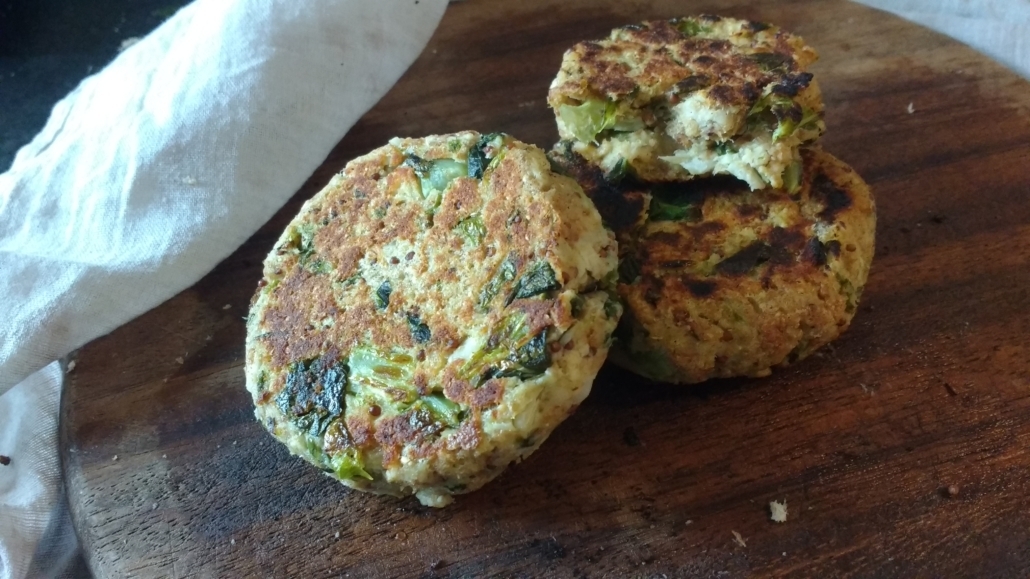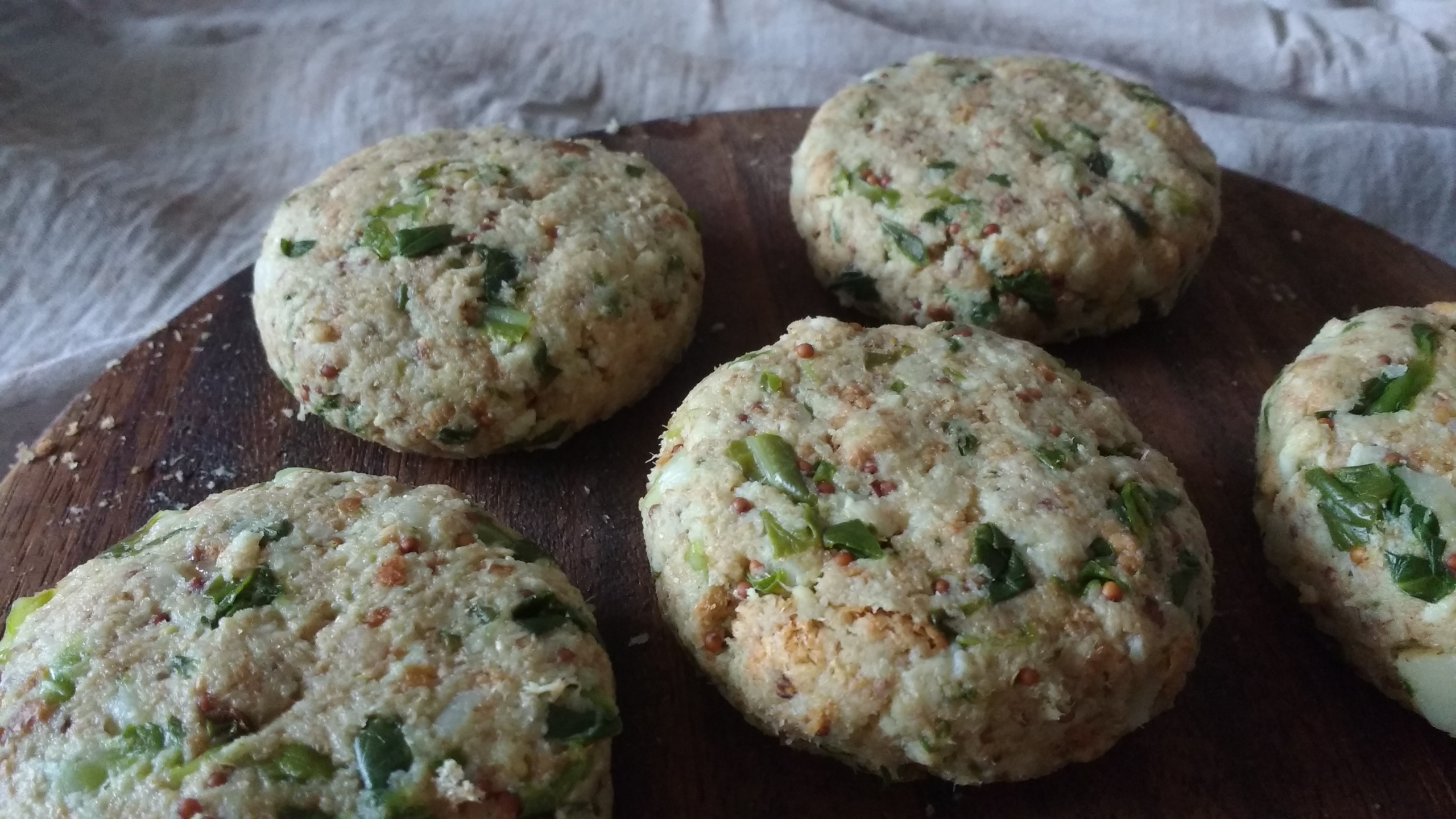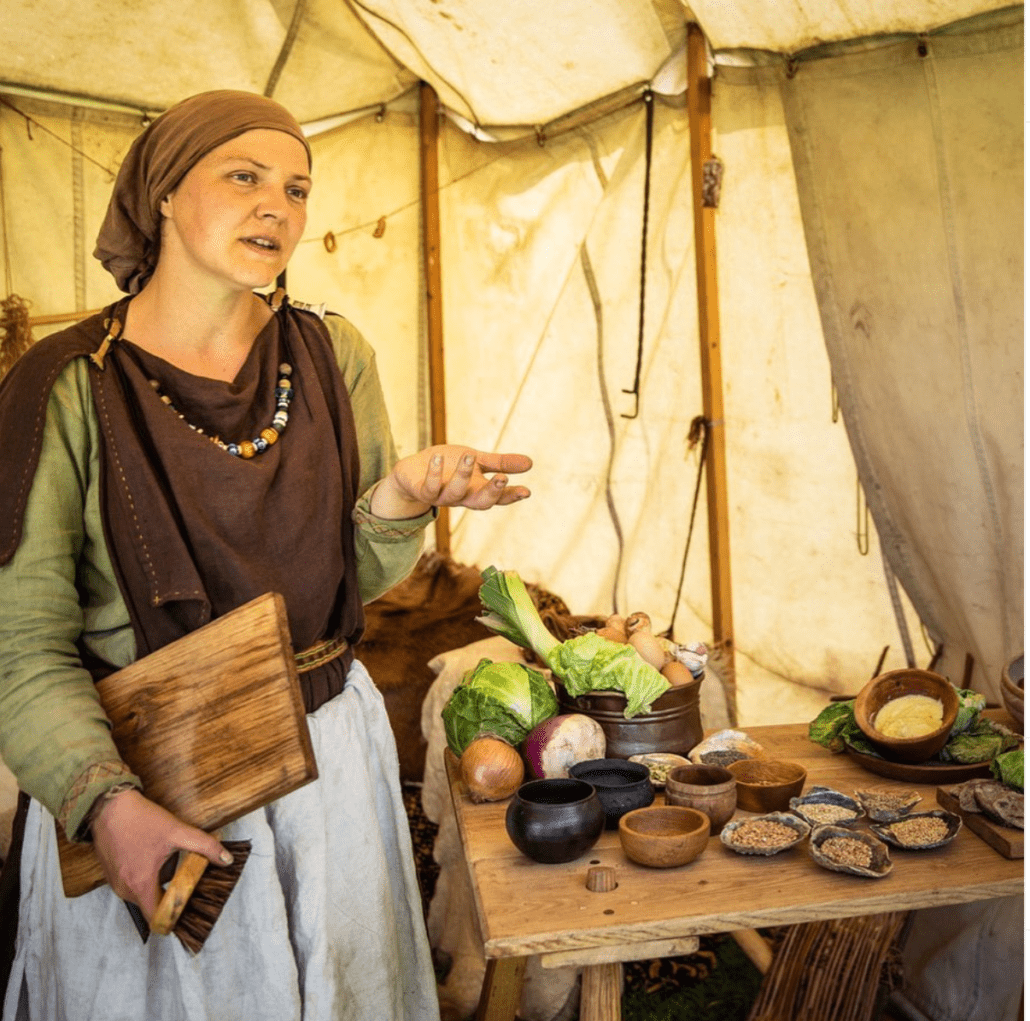Historical Recipes: Anglo-Saxon FISH CAKES
This week’s historical recipe is Fishcakes but without potatoes!
Potatoes don’t appear in Britain before the 16th century: the Tudor era. They are imported from the Americas, like many of our now ‘’usual’’ 21st century foodstuffs. So no potatoes in Early Medieval Britain, when the Angles, Jutes and Saxons settled!
Brought to you by Caroline Nicolay, archaeology educator & Iron Age specialist at Pario Gallico.
The idea is to bind together with an egg:
. smoked fish (easily preserved and transported, so available fairly cheaply all year round)
. cooked vegetables (they can be stew or soup leftovers)
. breadcrumbs (from a dry loaf: no food was thrown away during History!)
Ingredients:
(For 6 big fish cakes)
– 1 smoked mackerel filet, skin removed, flaked (cooked fresh fish can also be used for a lighter taste)
– 1 egg, beaten
– 1 cup of drained… leftover vegetable stew, potage (= chunky soup) OR freshly boiled vegetables cut in small pieces: leeks, onions, garlic especially (but you can add boiled: cabbage, parsnips, turnips, spring greens, nettles, white / yellow carrots…)
– breadcrumbs made by shredding 2 or 3 thick slices of bread (ideally stale sourdough bread, or lightly toasted and left to cool down, but normal sliced bread works too)
– OPTIONAL: chopped up raw rocket leaves to add a peppery taste, or wild garlic leaves if you fancy a bit of foraging! Thyme or chives work very well too.
Recipe:
1- Vegetables: If using leftover stew, soup, potage etc: drain the vegetables from the broth and keep the later for a light accompaniment to the fish cakes or as a base for a new soup. If using freshly cooked vegetables, boil them in lightly salted water for 15 minutes, drain and reserve. (You can also sweat the onions, leeks and garlic together in a pan with a tsp of butter or lard)
2- Once cooled, mix the cooked vegetables with the flaked fish and any optional leaves or herbs you choose to use, chopped up.
3- Add the breadcrumbs and mix thoroughly, almost kneading it all together with the back of a spoon.
4- Add the beaten egg and mix. If the mix is too dry and doesn’t come together, add a teaspoon of broth or warm water. If the mix is too wet and sticky, add some breadcrumbs.
The dough should come together easily, be a bit sticky and form a ball that doesn’t crumble when squeezed in your hand.
5- Form 6 or more patties / fish cakes with your hands: 1/2inch (1.5cm) thick maximum, the size of your palm…or not, as you wish! As long as they are not too thick, they will cook in the same way.
8- Cook in a dry frying pan (or a skillet) over a medium-high heat at the start for about 5 minutes or until the bottom of the cakes begin to brown: they will detach from the pan by themselves when shaken or when pushed gently with a spatula. Flip them over, do the same. Keep an eye on them, they cook very quickly! Then turn the heat down and cook slowly for another 2 minutes…
You can cook them as you like: more or less dry, just golden or quite crunchy!
Ready to be eaten hot or cold, as a snack on a walk or as a nice meal served with green leaves and wholegrain mustard, or a nice light vegetable pottage / soup…
Archaeology educator and Iron Age specialist, living historian and experimental archaeologist, Caroline Nicolay, Director at Pario Gallico. Caroline will be back at the festival this year demonstrating Iron Age cookery and how to make ancient paints, among other things.
Instagram: @ParioGallico
Twitter: @pariogallico






